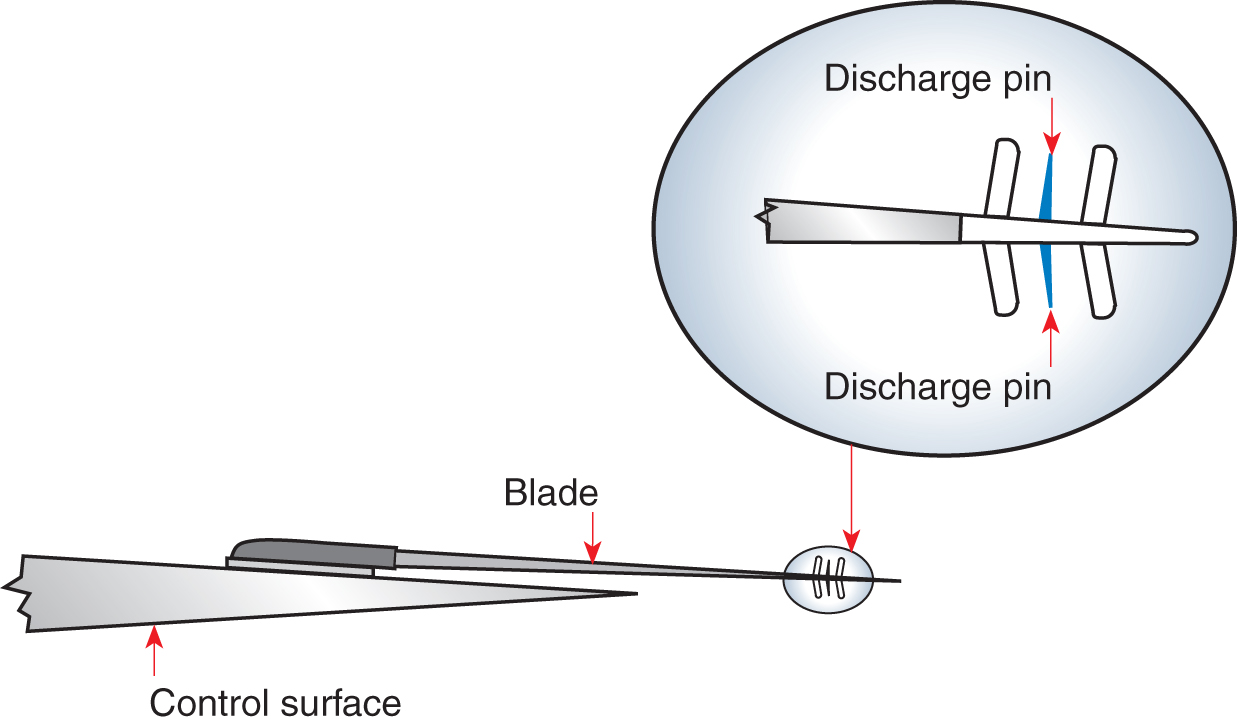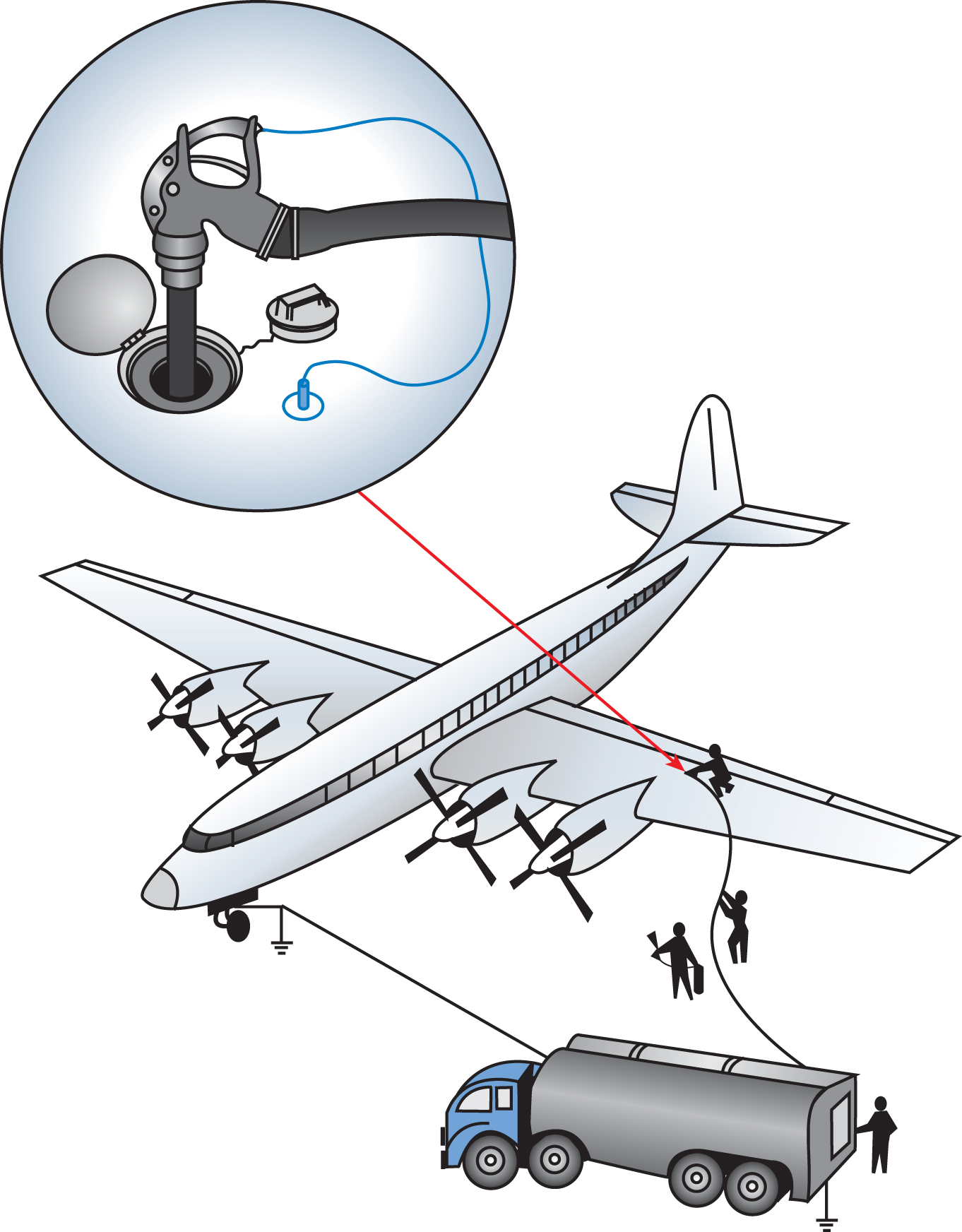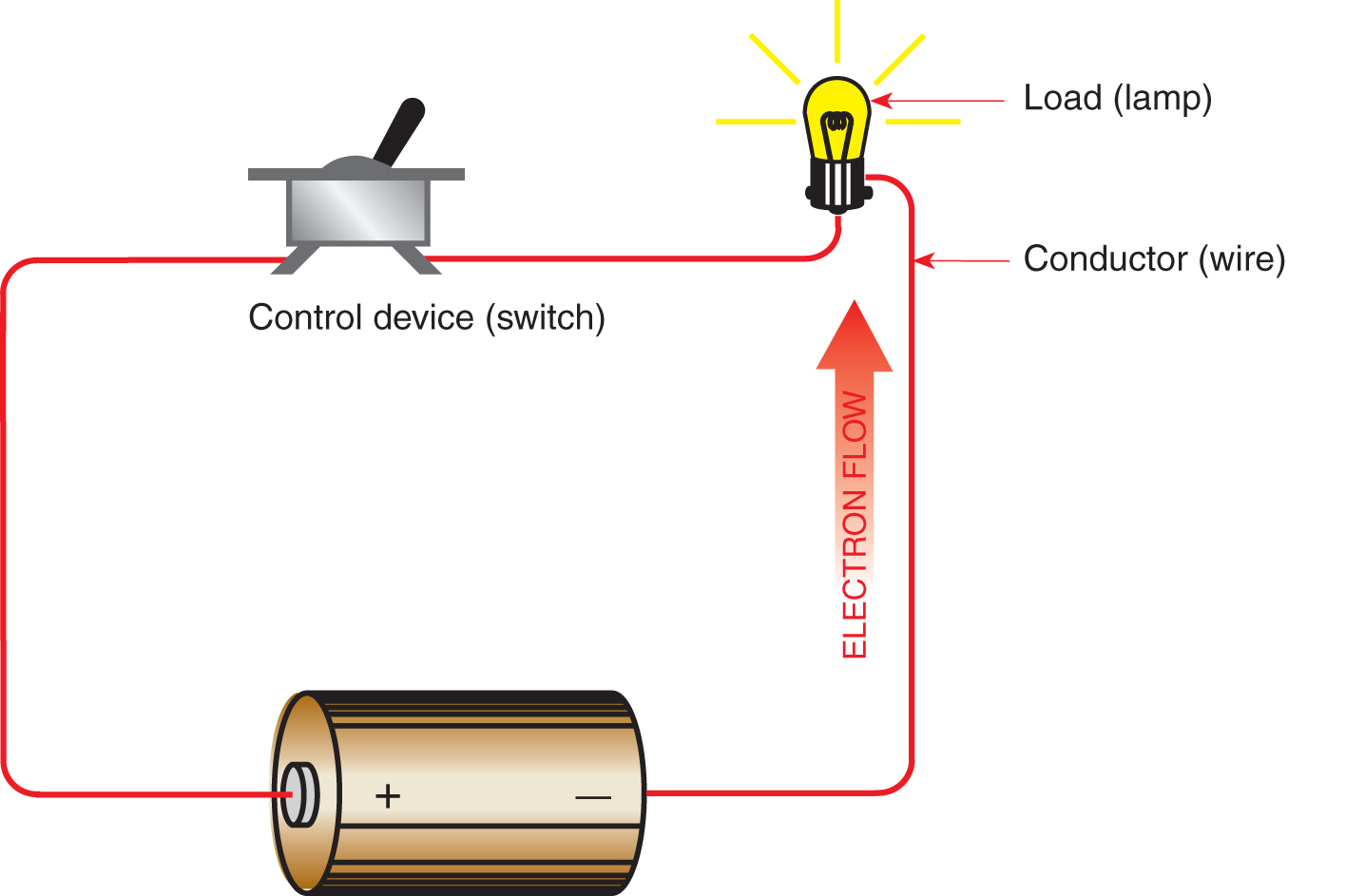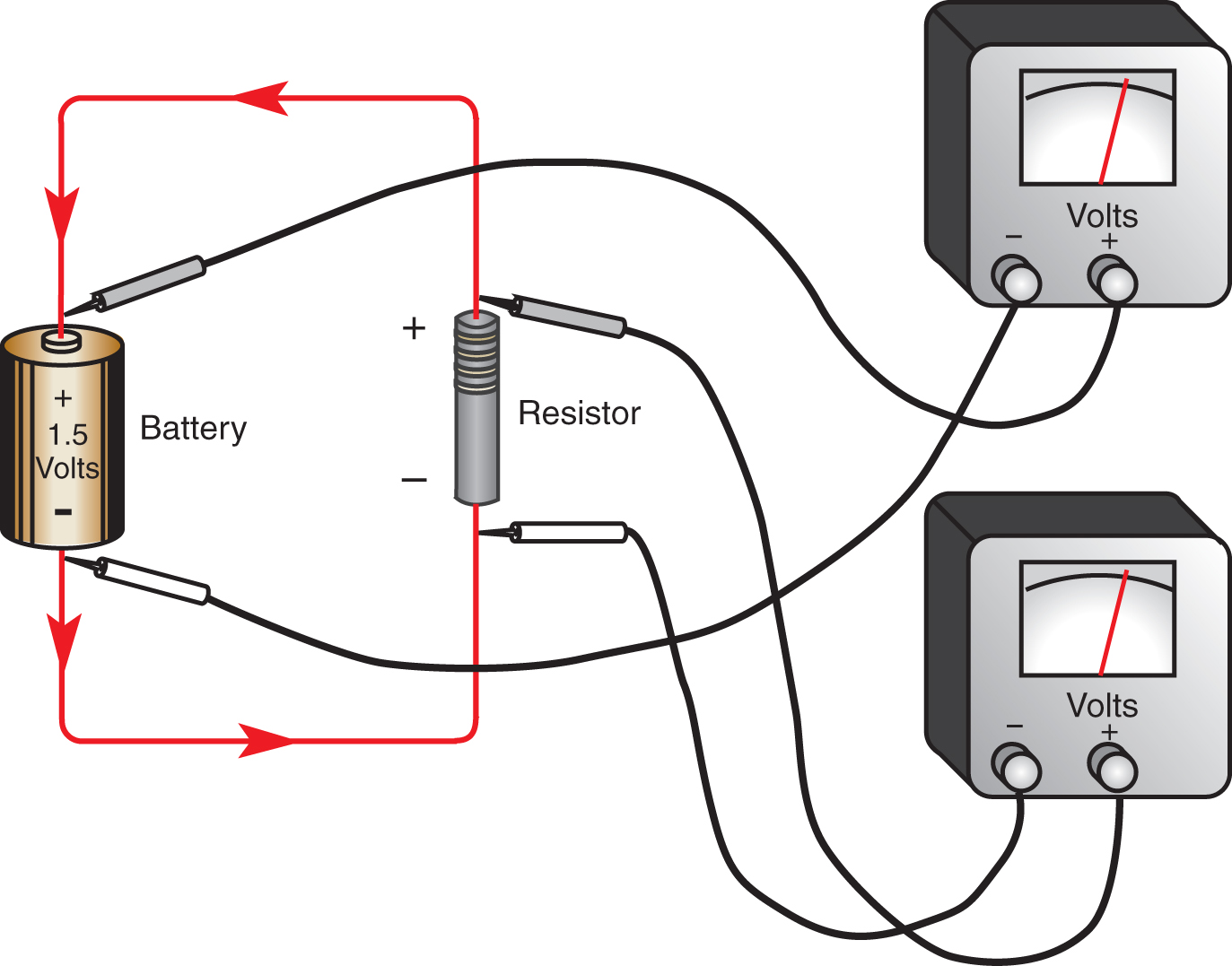Today, we’re featuring an excerpt from our new textbook Practical Electricity for Aviation Maintenance Technicians. As you can tell from the title, this book is geared for new AMT candidates, but it does feature a wealth of information on aircraft electrical systems useful to anyone flying or fixing airplanes.
There are two basic types of electricity: static and current. In static electricity, electrons accumulate on a surface and remain here until they build up a pressure high enough to force their way to another surface or device which has fewer electrons. Static electricity is generally a bother, and steps must be taken to prevent its formation and/or to get rid of it.
Current electricity, on the other hand, is the type most often used. There are two types of current electricity, Direct Current (DC), in which the electrons always flow in the same direction, and Alternating Current (AC), in which the electrons periodically reverse their direction of flow.
Static Electricity
When you slide across the plastic seat covers of an automobile, the friction between your clothing and the seat covers causes your clothes to pick up an excess of electrons from the seat. This is exactly the same thing described earlier when a piece of amber was rubbed with sheep’s wool.
If there is no conductor between your body and the car to make a path for these electrons to leak off, your body holds the extra electrons and is said to be charged because there is an electrically unbalanced condition between it and the car. But as soon as you touch or even come close to a bare metal part of the car, the extra electrons leave and jump to the metal in the form of a spark. This accumulation and holding of electrical charges is called static electricity.
Lightning is just a big spark. Friction of the air moving up and down inside the clouds causes water droplets in the clouds to become charged, and when enough electrons have concentrated in a cloud, the electrical pressure they produce forces them to move through the air. These electrons jump between clouds having different charges or from a cloud to the ground. This is the gigantic spark we call lightning.
As mentioned earlier, an object with an excess of electrons is negatively charged, and an object which has lost its electrons and wants to get them back is positively charged. Two positively charged or two negatively charged objects repel each other, while objects having opposite charges attract. When oppositely charged objects touch, the extra electrons travel from the negative object to the one with the positive charge and they become discharged, or electrically neutral. While static electricity has some uses, it is most often thought of as a nuisance. So a path must be provided to allow the electrons to pass harmlessly from one charged object to another before the charges can build up enough pressure to cause a spark to jump.
In addition to producing a mild shock when you touch the metal part of your car, static electricity can cause radio interference and can damage sensitive electronic components. It is possible, on a dry day, that just taking a few steps on a nylon carpet can build up more than 10,000 volts of static electricity on your body. When you have accumulated this much charge and touch some electronic components, they can be destroyed. When working with sensitive electronic equipment, always wear a grounded wrist strap to bleed off any charge on your body before handling the equipment.
Many airplanes have static discharge points or wicks installed on the trailing edges of the control surfaces. These devices allow the static charges that build up on the control surfaces as air flows over them to discharge harmlessly into the air and not cause static interference in the radio equipment.

Static electricity causes a serious fire hazard when aircraft are being fueled or defueled. The flow of gasoline or turbine fuel in the hose produces enough static electricity to cause a spark to jump and ignite explosive fumes.
Current Electricity
Current electricity is the form of electricity that has the most practical applications. A source of electrical energy such as a battery or alternator acts as a pump that forces electrons to flow through conductors. In this study of practical electricity, this flow is called current and because we are considering it to flow from positive to negative, it is positive current.

For current to flow, there must be a complete path from one terminal of the source back to the other terminal. The figure below shows a complete electrical circuit. The battery is the component in which chemical energy is changed into electrical energy, and current is forced out of the positive terminal, through the switch, the control device, to the lamp. The lamp acts as the load, which changes electrical energy into heat and light. The current then returns to the negative terminal of the battery. Current flows as long as the switch is closed, forming a complete path.
The electrical pressure that forces current through the circuit is measured in volts, with the basic unit of electrical pressure being one volt. Electrical current is measured in amperes or, as we more commonly call it, in amps. One amp is the flow of one coulomb per second, and one coulomb is 6.28 billion billion (6.28 x 1018) electrons. All conductors have some resistance which opposes the flow of electrons in much the same way that friction opposes mechanical movement. The basic unit of electrical resistance is the ohm. One volt of electrical pressure will force 1 amp of current to flow through 1 ohm of resistance.

When current flows through a resistor, power is dissipated and voltage is dropped. The voltage across a resistor can be measured with a voltmeter in the same way as the voltage produced by a battery. This voltage is caused by current (I) flowing through the resistor (R), and it is called an IR drop, or a voltage drop. The end of the resistor where the positive current enters is the positive end, and the end where it leaves is the negative end.

When current flows through a resistance, power is used, or dissipated, and voltage is dropped. The voltage dropped across a resistor can be measured with a voltmeter in the same way as the voltage produced across the terminals of a battery.
Electrical pressure caused by changing some other form of energy into electrical energy may be called an electromotive force (EMF) a potential difference, or just a potential. Electrical pressure caused by current flowing through a resistance is not a source of electrical energy; it is a drop in the electrical pressure. This voltage is usually called a voltage drop or an IR drop because the amount of drop may be found by multiplying the current (I) by the resistance (R) through which it flows. These terms for voltage are often used interchangeably, and all of them use the volt as the basic unit of measurement.




